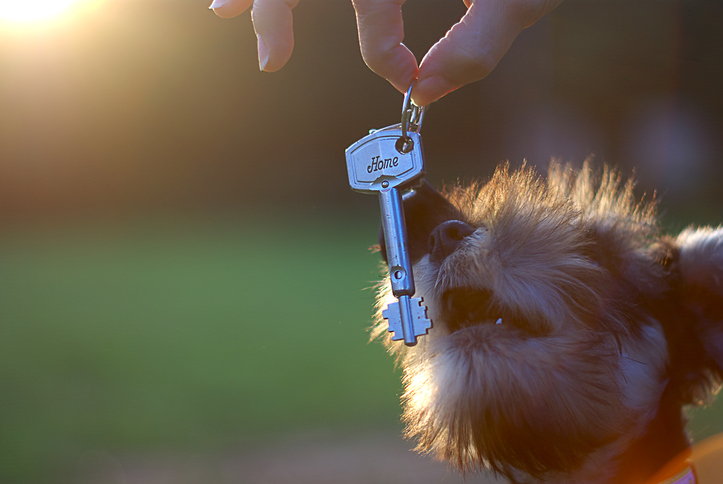Between dodgy landlords, nasty neighbours and finding a suitable home within your budget, choosing a rental property can be hard. Indeed, add a pet into the mix and finding a rental for you and your pet can be a daunting task. Sadly the difficulty in finding accommodation can also be a reason why some people are forced to give their pets up for adoption. However, attitudes are changing and with a few hints on how to build a pet-friendly rental profile you and your furry friend will be enjoying your new pad in no time.
Renting with a pet
Firstly, it’s important to begin your search for a rental by being realistic. As hard as it is to believe, not everyone will love your dog or cat as much as you do. I know, crazy right? Although, there are some people that can be swayed by the puppy-dog eyes or soft meows.
Without a doubt, you need to address any pet-related concerns right at the beginning of your application process. If you know your pooch or kitty is a layabout, let a potential landlord know, it may ease their concerns.
Other common worries that landlords can have about pets include:
- Noise— if Fido’s favourite pastime is barking in the middle of the night that can be annoying for neighbours
- Damage to furniture or carpets— accidents happen, but they also cost money
- Cleanliness— lots of people have allergies and pets that drop a lot of hair can cause health problems
- Discipline— an untrained pet can be aggressive or disruptive
Finding a pet-friendly rental
It may sound obvious, but make a point of asking if a rental is pet-friendly up front. If you’re looking for your new dream home online, most website searches have a check box to easily identify pet-friendly rentals. A quick Google search will also throw-up a range of results— there are entire websites dedicated to pet-friendly rentals.
Tip: Most of the major real estate websites have a ‘pet friendly’ or ‘pets allowed’ check box to help you find a rental property that will welcome your canine pal or feline friend. There’s also Rent With Pets which is dedicated to connecting responsible pet owners with pet-friendly landlords.
“Selling” your pet to your landlord
Being prepared and having the right paperwork makes you look more responsible and committed in the eyes of a potential landlord. After all, studies have shown tenants with pets make better renters. So look out for any Pet Applications or Pet Agreements the landlord or real estate agent has provided. Fill them out and attach them to your resume and application.
In the same way you’d prepare for an interview, it’s a good idea to build and update your pet’s resume. Even when the landlord or real estate agent doesn’t ask for a pet resume, hand it over anyway. It might just be the deciding factor.
What to include in your pet resume:
- A basic outline of your pet— breed, age, temperament, health status and personality
- A behaviour profile— characteristics that make your pet suitable for living in a rental property (e.g. ability to socialise or how they interact with children)
- Examples or anecdotes of good behaviour— keep them short, no one likes a braggy parent
- A list of toys or ways you will keep your pet entertained during the days
- A plan for disposing of your pets waste— landlords like to see you’ve thought about keeping the place clean
- Council registration documents, vaccination certificates, desexing certificates, microchipping details and insurance policies
- A list of emergency phone numbers or positive references from your vet and any previous landlords
- A gorgeous photo of your pet looking super cute and adorable
Tip: Add in any of your pets’ notable achievements; if Lucky was top of the class in puppy pre-school attach the certificate to your resume.
By being prepared, going the extra mile and staying positive, you’ll soon find the dream rental for your and your beloved fur pal.
Good luck!







Leave A Comment